It is officially mushroom season! Can you think of a better way to celebrate than to make a darling mushroom skirt? Janome Maker Vivien from Fresh Frippery is well known for her amazing historical costumes but is sharing a whimsical DIY Mushroom Skirt tutorial for you to make for any age or size!
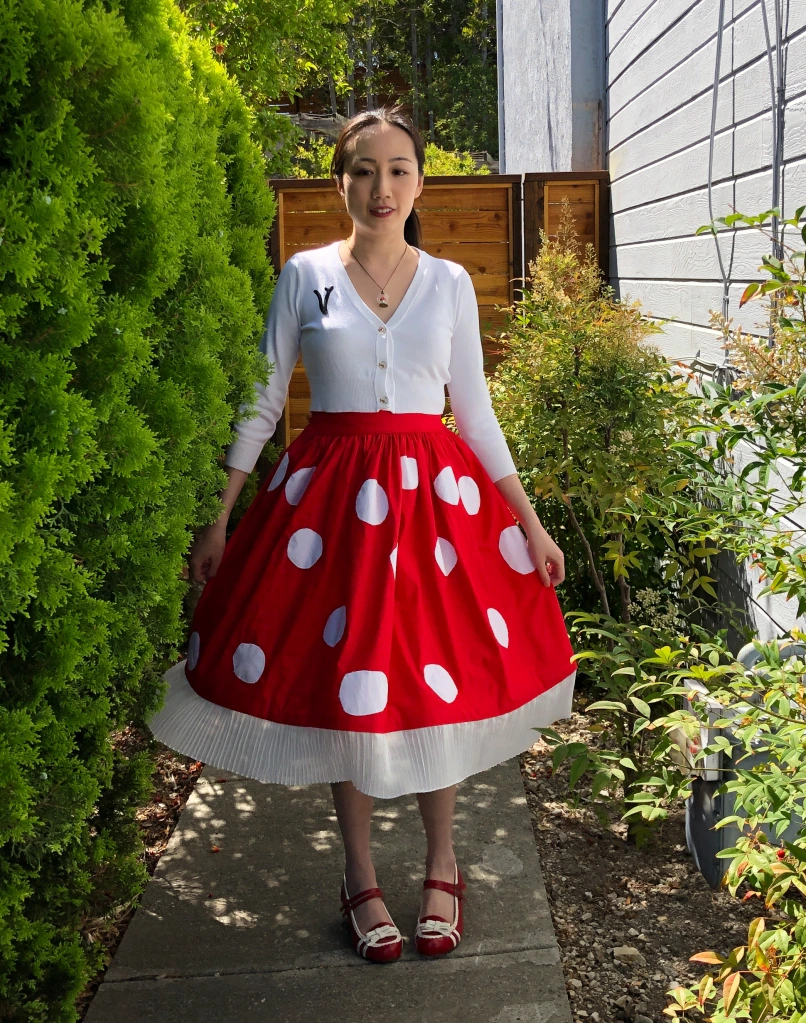
I adore the red and white toadstool mushrooms known as Amanita muscaria (aka fly agaric) and wanted to make a cute skirt inspired by them. I've worn it in my photos with a monogram cardigan and big fluffy petticoat for a 1950s style look, but this skirt could be styled with a romantic shirt and a flower crown for a cottage core outfit. The front half of the skirt has a flat waistband for a smooth look while the back half of the skirt has an elasticated waistband for comfort and for adjustability!

SKILL LEVEL: Beginner/intermediate
TIME REQUIRED: 4-5 hours
WHAT YOU WILL NEED (exact amounts depend on your measurements):
- 2 or more yards of red cotton fabric
- 1 yard or various scrap pieces of white cotton fabric
- 3-4 yards or more of white pleated trim or lace
- a strip of interfacing the same size as your waistband
- thread, elastic, pins, scissors, chalk, etc.
Before you begin you'll want to take a few basic measurements: your waist circumference, and the desired length of your skirt. For the latter, you'll want to measure from the smallest part of your waist to wherever you would like the skirt to stop (above the knee, below the knee, etc.) Use the diagram below to convert those measurements into A, B, and C for the pattern pieces.

Using the pattern diagram as a guide, use chalk to mark the rectangles on red fabric. Cut out your front and back skirt panels, front waistband, and back waistband. Use the front waistband as a pattern to cut out a piece of interfacing the same size, then iron or sew the interfacing to the front waistband.
Note: the 5-inch width of the waistband pieces will result in a final 2-inch tall waistband (once it is folded over with 1/2 inch seam allowances). If you want a shorter or taller waistband you can adjust the width when cutting.
Fold the red waistband pieces in half lengthwise and iron to mark a crease down the center.

Cut circles and ovals out of your white fabric in a variety of sizes from 3-5 inches wide. These will become the mushroom spots. The number of spots depends on personal preference and the size of your spots and skirt, but for reference, I have 28 total on my skirt.

Pin the mushroom spots onto both the front and back skirt panels in a scattered, random pattern. Leave enough room at the top, bottom, and sides for seam allowance and hemming. (There are half inch seam allowances on the side and top, and you will want the bottom 2 inches free).

Use your machine's appliqué stitch (shown below on my Skyline S9) to attach all the spots to your skirt panels. (If you do not have an appliqué stitch on your machine model you can use a zigzag stitch but it is recommended you use a white fabric not prone to fraying). If you are using the appliqué stitch start with your needle just outside the mushroom spots.
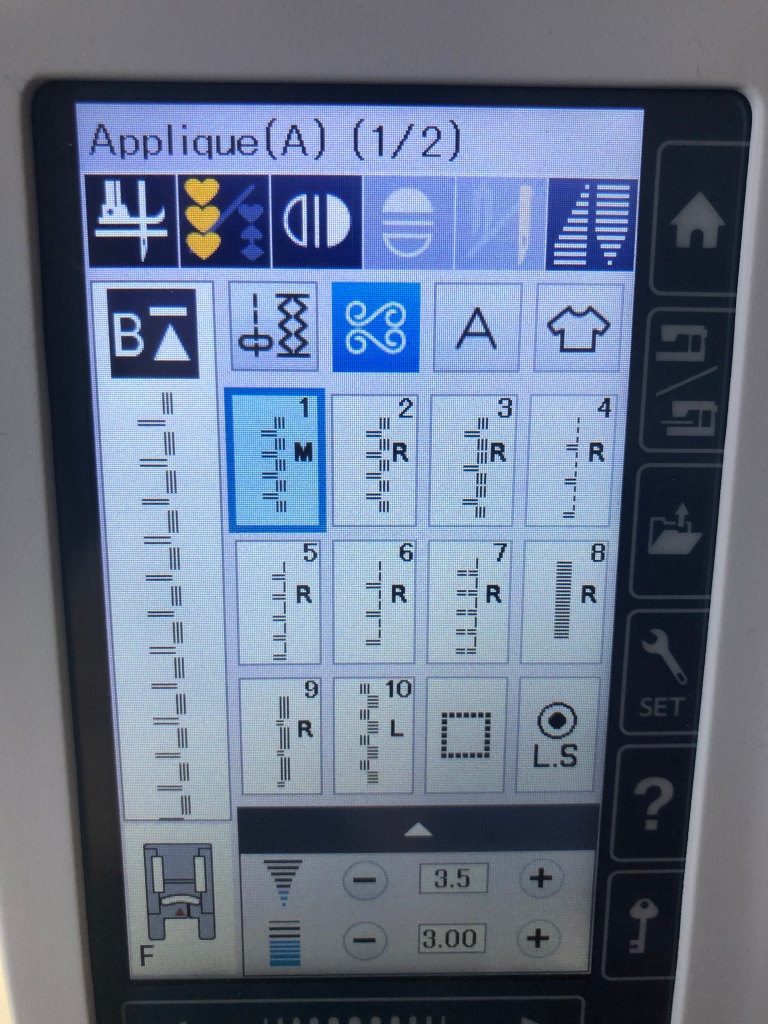

Sew up the side seams and press open flat.
ATTACHING THE BACK WAISTBAND:
Sew the WRONG side of the back skirt panel to the RIGHT side of the back waistband with a 1/2 inch seam allowance. (This means you will start by putting one of the long edges of the waistband against the top inside edge of the skirt). You should have the ends of the waistband extend slightly past the seam. Sew down the long edge then flip up the waistband up, creating a clean finish on the inside of the skirt.
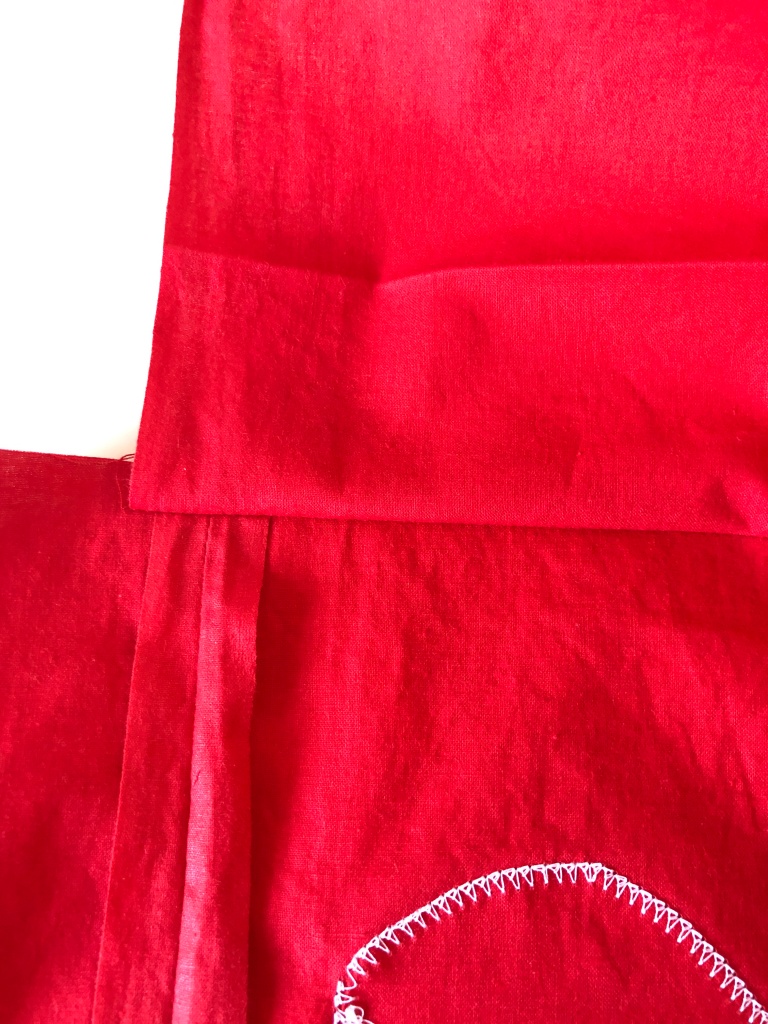
Using the ironed center crease to help you, fold half of the waistband over towards the outside of the skirt, then tuck under the seam allowance.


Pin down the edge of the waistband on the outside of the skirt and topstitch. You will now have a channel to thread your elastic through.
Cut a piece of elastic the same length as what your final back waistband will be. (This is half your waist measurement plus another inch, for 1/2 inch seam allowance on each end). I used a 1-inch wide piece of elastic to reduce bulk, but you can use up to 2 inches wide if preferred.
Insert the elastic through the back waistband channel, which will cause the waistband to gather up. (A tip: Use a safety pin to anchor one end of the elastic to the waistband so it doesn't get lost as you use a second closed safety pin attached to the other end of the elastic to thread it through the channel).

Securely stitch down each end of the elastic inside the waistband channel.

ATTACHING THE FRONT WAISTBAND:
Gather the front skirt panel across the top edge into a final width equal to half your waist size. To do this, sew 2 rows of straight stitches 1/4" apart, then pull both threads at the same time to gather the skirt into the desired width.
Attach the front waistband in a similar manner to the back waistband by first sewing the WRONG side of the skirt panel to the RIGHT side of the waistband. Make sure the ends of the front waistband (with the seam allowance folded over) overlaps the raw edges of the back waistband. Flip up the waistband and turn your skirt over to look at the outside.
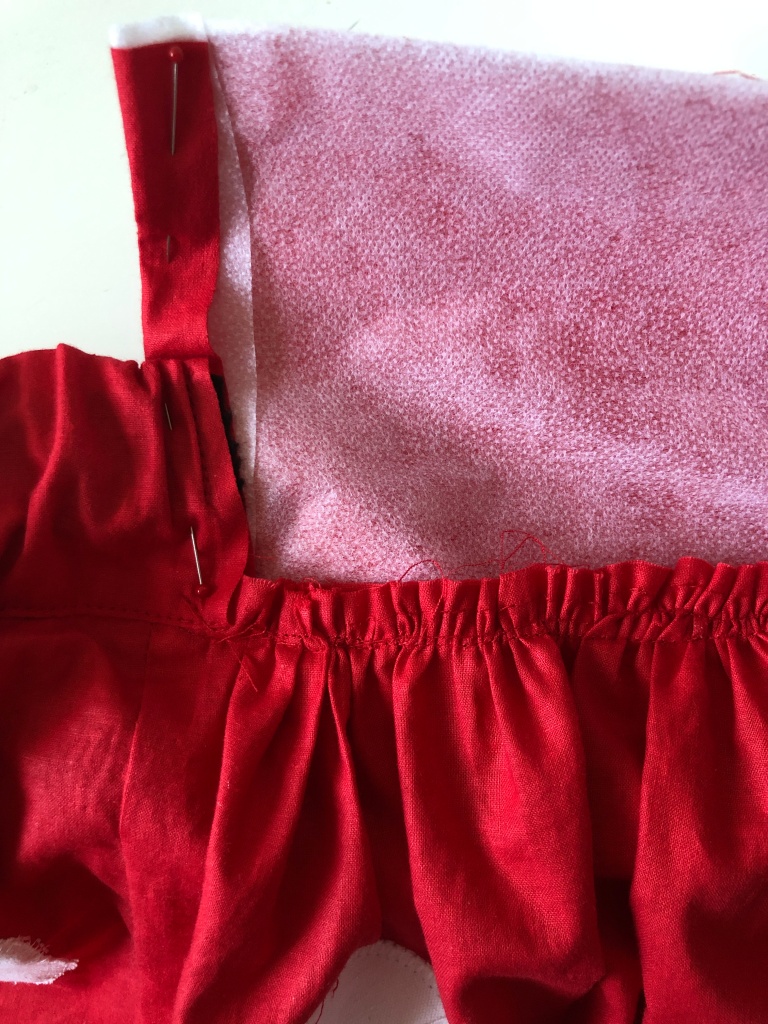
Similar to the method used for the back waistband, flip half of the front waistband over to the outside front of the skirt, tuck in the raw seam allowance, and pin down, covering the gathered portion.

Top-stitch the front waistband along the bottom edge and the sides where it meets the back waistband. Also top-stitch across the top edge of the entire top front/back waistbands of the skirt.
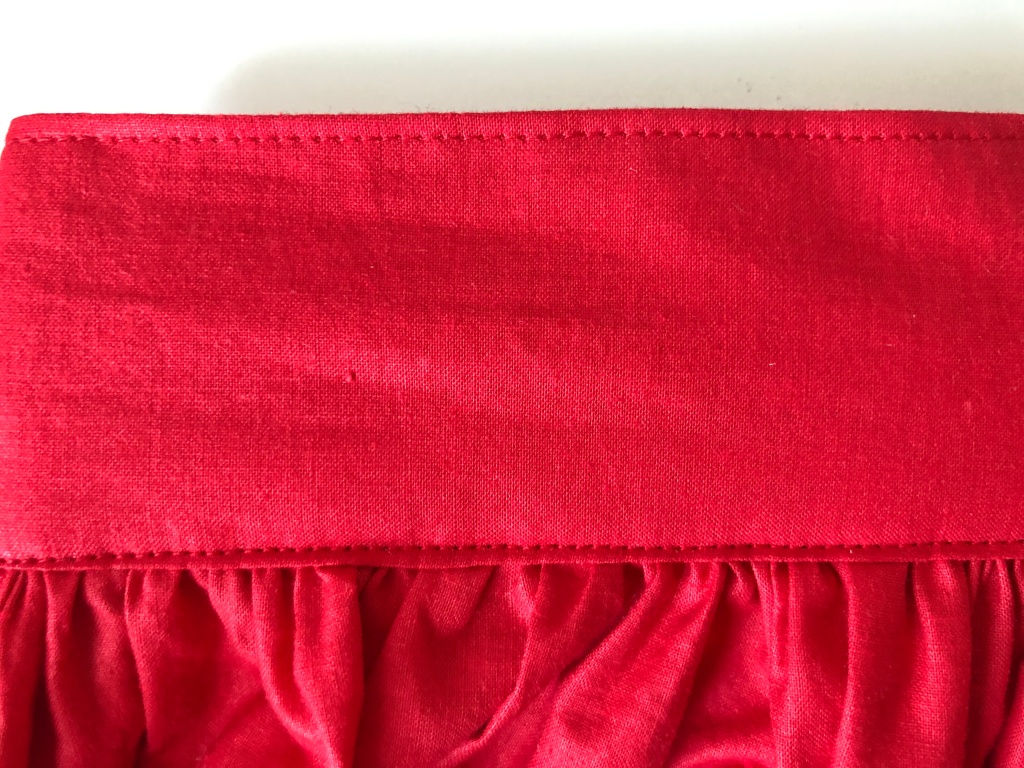
ADDING TRIM:
To mimic the gills of the mushroom you'll want to add trim to the hem of the skirt. I've used a pleated chiffon trim but you can also use lace or a plain white fabric ruffle.
Measure the bottom circumference of your skirt. You will need to cut some trim the same length plus an extra inch for seam allowance. Sew the ends of the trim together to make a big circle. Pin the top edge of the trim UPSIDE DOWN to the hem of the skirt.

Remove the original pins as you fold the bottom up, then over again, to cover all raw edges and re-pin. Stitch where the pins indicate.
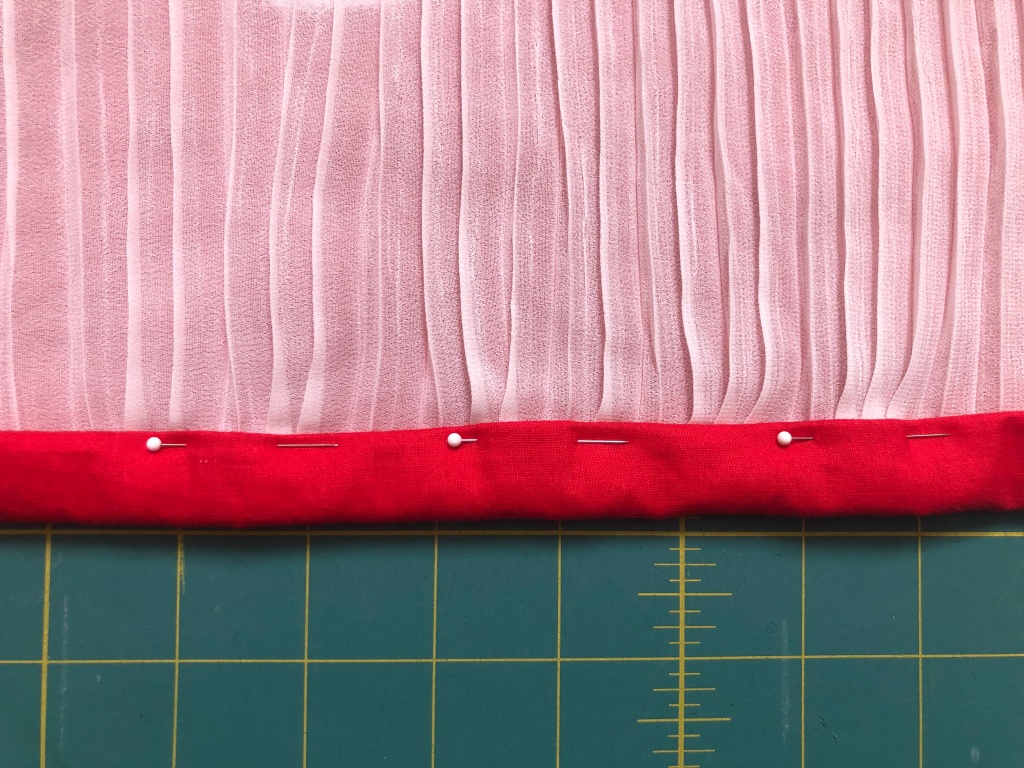
Press the hem flat. If your trim is sheer you'll want to press the red fabric upwards behind the main skirt panel so that it doesn't hang down behind the trim. (This folded hem is to add a little extra body to the hem of the skirt. If you prefer, you can also serge the trim to the skirt but should shorten the panels and trim accordingly).
Enjoy your mushroom skirt!
